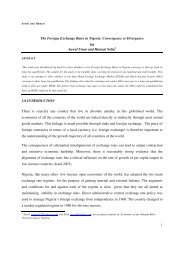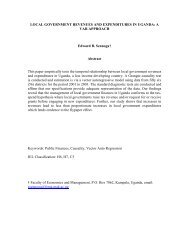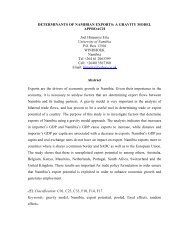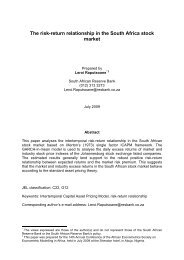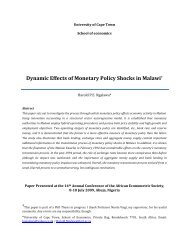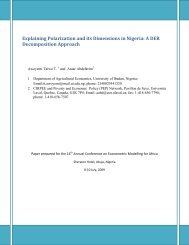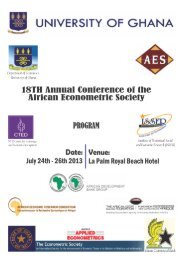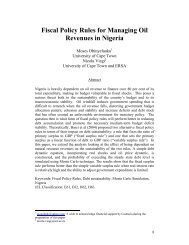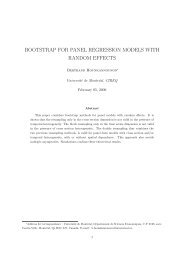An augmented capital asset pricing model
An augmented capital asset pricing model
An augmented capital asset pricing model
You also want an ePaper? Increase the reach of your titles
YUMPU automatically turns print PDFs into web optimized ePapers that Google loves.
markets are large but highly illiquid, such as Nigeria where there are 271 listed companies but only 10<br />
are traded regularly (Hearn and Piesse, 2008).<br />
For each month t, each company j is ranked by the market value of equity at the end of<br />
December. Then, firms are classified into 3 portfolios based on market value, from the smallest to the<br />
largest. For each size portfolio, stocks are further sorted into 3 separate illiquidity ranked portfolios<br />
according to their annualised generated illiquidity factor values in ascending order. Nine sizeilliquidity<br />
portfolios are constructed and are rebalanced annually. The equally weighted monthly<br />
returns on portfolios are computed each month from December to the following December. Repeating<br />
this procedure for every year results in 143 equally weighted monthly returns from January 1996 to<br />
December 2007. In addition to these portfolios rebalanced and sorted to reflect size and illiquidity<br />
state factors, four additional equally weighted portfolios are generated for stocks local to each<br />
domestic market in the overall sample, resulting in country portfolios for South Africa, Kenya, Egypt,<br />
Morocco and London (FTSE100 stocks). The market excess returns variable is generated as the<br />
aggregate average returns each month across each market. Shum and Tang (2005) form a market<br />
returns variable from both an equally weighted and a market <strong>capital</strong>isation weighted average but in<br />
this paper the equally weighted average of returns is used as the market portfolio. This is because<br />
London and the JSE dominate all of the African equity markets and therefore a market <strong>capital</strong>isation<br />
weighted portfolio would impose a high level of bias that reflects the characteristics of UK and South<br />
African stocks. Equally, other methods commonly used in the literature to determine the market<br />
variable, such as a regional investment index proxy, such as the Standard & Poors or MSCI range of<br />
indices, are complicated by the lack of benchmarks for Sub Saharan Africa.<br />
The monthly size factor SMB (small minus big) is the difference between the average returns<br />
on the three small stock portfolios and the average returns on the three big stock portfolios. The<br />
monthly liquidity factor (ILLIQ) is the difference between the average returns on the three highilliquidity<br />
portfolios and the average returns on the three low-illiquidity portfolios.<br />
3. Model<br />
Intuitively, investors in small emerging markets with low levels of development may be attracted to<br />
large, well-known companies rather than smaller ones as these are considered safer investment<br />
opportunities with more reliable dividend payouts. These larger blue-chip companies may be the<br />
better domestic parastatals and former state owned enterprises that have been privatised or large<br />
privately owned companies or multinationals. All appear to represent profitable investments because<br />
of investor confidence that they will comply with international corporate governance standards<br />
whereas smaller companies would find this more costly to implement. In addition, it is well<br />
established that investors implicitly price a liquidity premium into valuations and expected returns,<br />
although the literature documenting methods of liquidity premium measurement remains scarce.



